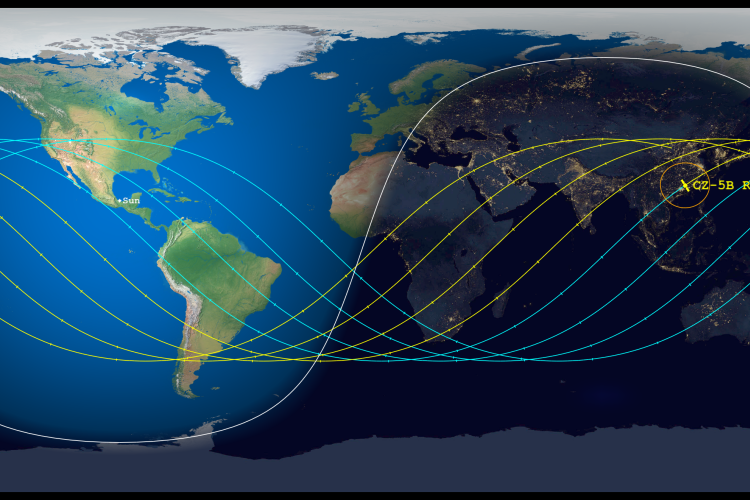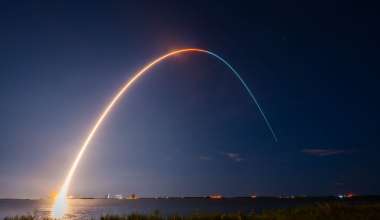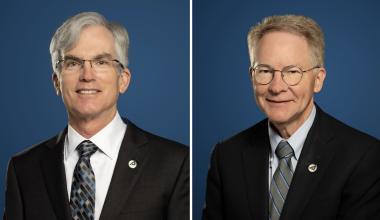REENTRY OF THE LONG MARCH 5B (CZ-5B) ROCKET STAGE CONFIRMED:
CONFIRMED by @US_SpaceCom — #CZ5B rocket body has reentered the atmosphere. Details below. https://t.co/j7EfLlFeRx
— The Aerospace Corporation (@AerospaceCorp) July 30, 2022
ORIGINAL:
The Aerospace Corporation’s experts at the Center for Orbital and Reentry Debris Studies (CORDS) are closely tracking the uncontrolled reentry of a massive 23-metric-ton rocket booster. The falling space debris, measuring in at 53.6 meters in height, is the result of the Long March 5B launch on July 24, 2022 to deliver the Wentian experiment module to China's Tiangong Space Station.
Due to the uncontrolled nature of its descent, there is a non-zero probability of the surviving debris landing in a populated area—over 88 percent of the world’s population lives under the reentry’s potential debris footprint. If this sounds familiar, it’s because similar uncontrolled reentries of Long March rockets occurred in 2020 and 2021. A reentry of this size will not burn up in the Earth’s atmosphere, and the general rule of thumb is that 20–40 percent of the mass of a large object will reach the ground, though it depends on the design of the object.
Aerospace’s space debris experts will be monitoring the reentry and providing updates as new data becomes available. They will also be providing additional analysis as developments unfold.
Tracking the Reentry
As they do with all reentries, Aerospace's CORDS experts will be actively updating their predictions of the rocket body's reentry path as new data becomes available. Be sure to follow @AerospaceCorp on Twitter to stay current and for additional analysis.
On Thursday, July 28, Aerospace hosted a discussion on Twitter Spaces where CORDS expert Ted Muelhaupt was joined by Robin Dickey of Aerospace's Center for Space Policy and Strategy, Jonathan McDowell of the Center for Astrophysics, and Matt Shouppe and Darren McKnight of LeoLabs to discuss the reentry, the importance of ensuring space safety, and opportunities to implement best practices for the future.
Understanding the Reentry
For additional context and in-depth Q&A with our experts, be sure to follow Aerospace on Medium. Recommended reading:
- A Quick Guide to Understanding Orbital Debris Reentry Predictions
- Another Uncontrolled Chinese Rocket Body is Plummeting to Earth. Questions?
- Will China Stop Recklessly Disposing of Space Debris?
- Spacecraft Reentry Basics
- What Does a Reentry Look Like
Our Experts in the News
- "Wait Begins for Falling 23-Ton Rocket Booster After China Space Station Launch" - The New York Times: Aerospace experts Ted Muelhaupt and Marlon Sorge provided expert commentary on the risks of injury caused by falling space debris.
- "China’s Out-of-Control Rocket Predicted To Crash on July 31" - Gizmodo: Sorge shares insight on how the CORDS team tracks and predicts reentries by using public data sets that are generated when an object being tracked passes over one of a collection of sensors across the planet.
- "Uncontrolled debris from Chinese space rocket could crash back to Earth as soon as Saturday" - USA Today: Aerospace's Lael Woods, Sorge and Muelhaupt discuss the reentry.
- Huge chunk of Chinese rocket expected to crash to Earth Sunday - Newsweek: Sorge discusses the reentry prediction and estimates for the size of the debris.
- It’s time for another round of anxiety over a Chinese rocket booster falling back to Earth - The Verge: Muelhaupt and Sorge discuss the need for mitigating the unnecessary risks of uncontrolled reentries.
- Chinese Rocket Debris Set for Fiery Plunge to Earth Again - The Wall Street Journal: Sorge and Robin Dickey of Aerospace's Center for Space Policy and Strategy provide commentary on the reentry and choices on practices that pose less overall risks.
- Don’t Fear China’s Falling Rocket—Fear the Future It Foretells - Scientific American: Aerospace's Martin Ross discusses the need to "tamp down" uncertainty given the rapid growth and evolution of the modern space industry, driven by commercial interest.
For media inquiries, please contact DRamirez@aero.org.
The Space Safety Institute at The Aerospace Corporation
The Space Policy Show: Monitoring Space Norms
To learn more read Dr. Mick Gleason's newly released paper, "No Haven for Misbehavin': A Framework for Verifying Space Norms".









